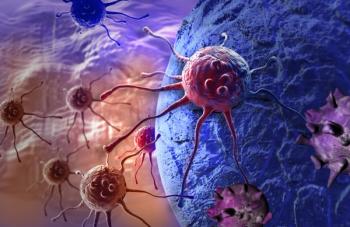
Moderate, Severe Fatigue Categories Accepted in Practice Guidelines
Moderate to severe fatigue was prevalent among almost half of patients undergoing active treatment and one-third of cancer survivors, according to a recently published study that measured fatigue.
Moderate to severe fatigue was prevalent among almost half of patients undergoing active treatment and one-third of cancer survivors, according to a recently published study that measured fatigue using the MD Anderson Symptom Inventory.
“Fatigue is one of the most severe cancer-related symptoms reported by patients-yet even so, currently there is no routine method for measuring fatigue, nor is there any effective management strategy for it,” said study author Xin Shelley Wang, MD, MPH, professor in the department of symptom research at The University of Texas MD Anderson Cancer Center. “Both clinicians and researchers need a simple, straightforward way to measure fatigue, and we believe that any such measurement must be based on the patient’s own report-what we call a ‘patient-reported outcome.’ ”
In this study, Wang and colleagues conducted a multicenter study of patient reported fatigue using the MD Anderson Symptom Inventory numeric scale, which asked patients to rank fatigue on a scale from 0 to 10. The study included 2,177 outpatients with breast, prostate, colorectal, or lung cancer. The results were
The researchers defined cut points on the fatigue scale. A rating of 4 or more was considered moderate fatigue and 7 or more was considered severe fatigue.
“In this study we demonstrated that fatigue is highly prevalent in major types of cancer, and that it interferes significantly with the patient’s daily routine,” Wang said.
Forty-five percent of the patients still undergoing active treatment for their cancer reported having moderate to severe fatigue. Those patients who were receiving opioids were three times more likely to report moderate to severe fatigue. In addition, patients with a poor ECOG status were twice as likely to report moderate to severe fatigue. Other factors associated with fatigue were a weight loss of 5% or more in the last 6 months (OR = 1.6), receiving 10 medications or more (OR = 1.58), having lung cancer (OR = 1.55), and those with a history of depression (OR = 1.42).
When looking at patients in complete remission, those not actively undergoing treatment and those with no evidence of disease, moderate to severe fatigue was reported in 29% of patients. Again, patients with a poor performance status (OR = 3.48) and those with a history of depression (OR = 2.21) were more likely to report moderate to severe depression.
“Many clinical practice guidelines, such as those put forth by the National Comprehensive Cancer Network, use categories such as mild, moderate, and severe to rate fatigue. Traditionally, the boundaries that define what constitutes mild, moderate, or severe fatigue have been based mainly on consensus from treating professionals,” Wang told Cancer Network. “Our results give full, empirical, quantitative support to the definitions mild, moderate, and severe fatigue utilized by various practice guidelines.”
Based on these results, using an established patient reported outcome questionnaire, the fatigue item could be used to screen for high fatigue burden, either for symptom intervention in day-to-day practice or for symptom management in clinical trials.
“It also could be used to monitor the development trajectory of fatigue over time during cancer interventions, as evidence of either toxicity from a treatment or the clinical benefit of symptom reduction from a therapy,” Wang said. “Delicate fatigue patient reported outcome data would also be a great resource for translational research into the etiology and mechanisms underlying fatigue, including potential biomarkers.”
Newsletter
Stay up to date on recent advances in the multidisciplinary approach to cancer.





